by Romina Ciulli and Carole Dazzi
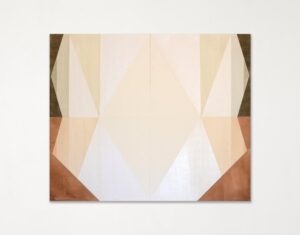
The works of artist Jo Hummel are characterized by a minimalist balance, made of symbolic forms which recall spiritual concepts, and pastel colors that produce unexpected sensory vibrations. A geometric and layered construction, intentionally abstract, through which are investigated the themes related to the human condition, everyday life, repetition and subjectivity. Also paper is the preferred material she uses in her works, manipulated with scissors and other tools of everyday life, and with which pictorial collages are created. This, not only it reflects the constant flow of the creative process, but it also delve into the primitive dynamics of the human subconscious. Let’s talk about it with the artist.
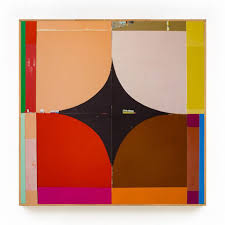
Minimalism is one of the fundamental aspects of your works. Your collage paintings, in fact, are conceived as a harmonious structure, where sacred symbols and geometric elements generate a sense of mental balance, or of inner restlessness. A continuous creative movement that finds in the process itself the basis for investigating interior and personal dynamics. Can you tell us how you create your works?
Thats a thoughtful introduction. As you mention, the work is created using collage. I colour sheets of watercolour paper and arrange the form using scissors and knives over a long period of time, making many adjustments until the painting presents itself. There are often many iterations, everything is in flux until I reach a balance. I feel a finished painting in my physiology. It’s a physical shift in my nervous system, its something that feels like safety.
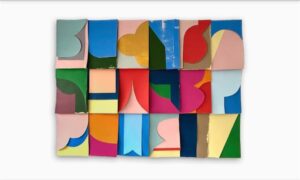
Another important element is color. Pastel shades, soft gradations and monochromatic variations, in addition to having an intense visual and aesthetic impact, seem to transcend the sense of reality in favor of a deeper perception of creativity. How does the use of color influence your artistic practice?
For many years I utilised bright, Bauhaus esque colours created using acrylic. At the time the high energy and unlimited colour option felt crucial. I was inspired by a comment by the artist Martin Creed, who talked about the choice anxiety caused by colour. So he used all the colours to resolve this. I related and applied it to my own practice. Recently the work has shifted towards the use of natural botanical dye and pigment.
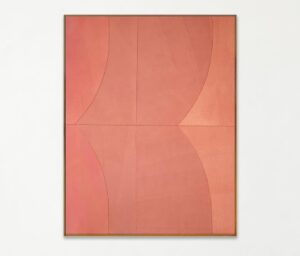
I had become dissatisfied with synthetic colour and, by pure serendipity, a reconnection and discovery in our family history revealed that my great grandfather Prof. John James Hummel, was the first professor of dyeing at Yorkshire College. He was half Swiss and trained as a chemist in Zurich before returning to the UK at the height of the industrial revolution. His industry facing book ‘The dyeing of textile fabrics’ was internationally renowned for detailing the methods required for extracting colour naturally for the mass production of textiles and print. I’ve been using his book as a guide on developing natural colour in the work.
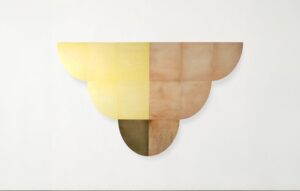
Your collages are mainly made with paper. It is an everyday, familiar material that can be manipulated, fragmented, layered. Furthermore, each piece, somehow preserving emotions and personal experiences, once “assembled” within the work has the ability to reflect ordinary, simple and even imperfect stories. Can you explain why you chose paper? And why do you consider it the most objective means to tell reality?
I have a real affection for working on paper. It’s such a humble material, the softness and fragility adds a vital component to the end result of the work. I’ve always enjoyed observing artists’ preliminary sketches far more than a finished masterpiece. They evoke so much more intimacy and curiosity for me and I’m attempting to convey this essence in my own works by choosing to use paper.
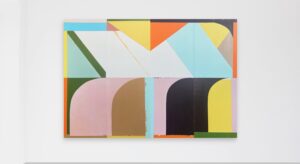
In reality, the very nature of collage continually presupposes an action of choice, of intuition, of exploration of multiple possible results, through spontaneous, natural, if you want, almost mental gestures. How much is this type of experimentation preparatory to the elaboration of the work?
I talk a lot about accessing the subconscious realm through the action of collage. It’s an ideal explorative activity for doing this. After a time you are making choices from somewhere deep in a dream scape. I’m continuously paying attention to what’s evolving and taking note of developments in order to steer the work further into a place of honesty.
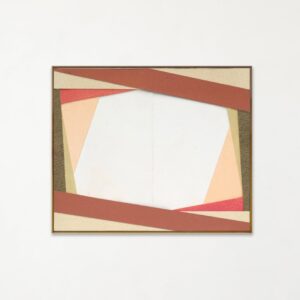
Another recurring aspect in your work is that of repetition. The forms of your collages, in fact, seem to organize themselves in symmetrical, cyclical, repeated structures, thus reflecting the common custom, made of ritual and recurring events. A sort of reassuring order that in reality hides the natural disorder of the human condition. In what way does this constructive way of repetition influence your artistic research?
I’m a bit obsessed with rhythm, patterns and cycles. Its very much a language which weaves its way through nature, humanity and the cosmos. Visually, repetition is soothing and I’m interested in why this is. It tells us a lot about the human condition. Our first human experience is that of a mother’s heartbeat.

In your most recent creations, including Sing Our Way Home (2025) and Deep Time IV (2025) presented at the Macadam Gallery in Brussels, color and shape are fundamental to delve into metaphysical concepts, with the aim of making the viewer aware of the relationship that binds us to matter and the universe that surrounds us. How did these two works come about?
I’ve been thinking a lot about the concepts surrounding panpsychism and the theory that all organic matter, whether animate, or inanimate, contains the potential for consciousness. It’s a rich playground of thought, especially whilst extracting colour from pigment and dye. This theory resonates deeply with notions of interconnectedness. Deep Time and Sing Our Way Home are musings on origins and the role of humanity on earth. I’m thinking about life from a more than human perspective.
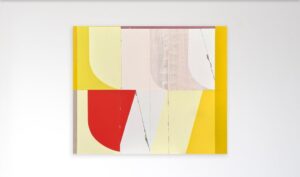
Instead, in the exhibition Looking Out (2023), held in Cape Town, elements of nature, such as those linked to the ocean, become a vehicle to connect with one’s interiority. A sort of artistic reflection, where looking out serves to better look inside oneself. Can you tell us about this project?
I work on an island. You are always looking out from an island. The hardedge dividing line of the sea and sky has been an important motif in the work since I began painting seriously. When you look out at the horizon you activate the parasympathetic nervous system by widening your visual field. Much of my work attempts to create the same effect by pushing all the interest to the edge of the painting. There is a German word, Sehnsucht, which translates to mean an unexplainable yearning. I was angling around this notion whilst making Looking Out.
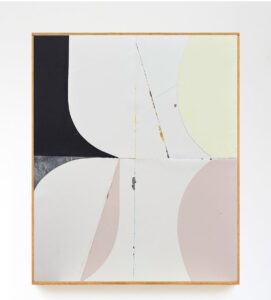
Are there any artists who have inspired or continue to inspire your work?
I have an affinity for the work of Agnes Martin. Martin interweaves themes of spirituality, specifically Taoism and its emphasis on the transcendence of nature and integration of the body and mind. Visually her work really resonated with me. The reductive, geometric, subtle compositions induce a sense of being grounded and lifted all at the same time.
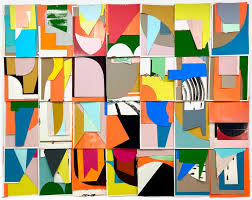
Can you tell us about your future projects?
The next 12 months are going to be busy. I’m currently working on a solo show for Macadam Gallery in Belgium. Macadam is a beautiful space and I’m excited to present there. After that I have a solo in Munich with Benjamin Eck gallery, followed by a Solo in LA with Gruin Gallery. In 2025 I have something really special to look forward to. I’ll be artist in Residence at Thread, Senegal which is curated by the Joseph and Annie Albers Foundation. I love to make work when I’m immersed in another culture. I’m really excited for this and seeing what effect Senegal has on my practice